Page 1 of 6
New to the Coal World and Need a Little Direction
Posted: Mon. Nov. 21, 2011 7:59 pm
by Smokeyja
Hi, I am new to the world of coal stoves and I have been renovating my house that was built in the 19th century. Part of the renovation included paying a company to line my chimney with a ss liner and fill the rest with a lime based insuland tion around the liner. My father works as a engineer for the local coal power plant and warned me about the corrosiveness of the ash mixing with moisture in the air, which will create sulfuric acid and eat away at the liner if not properly cleaned on a regular basis.
My first question about the ash issue is, will Bituminous coal cause more issues with this vs. Anthracite? I have been reading and it seems that Anthracite is a much better way to go for home heating. I want to drive up to Northern is and pick some of this Anthracite up but first I need to ask a few more questions. I live in Richmond VA and no one sells coal around here, so PA is my closest bet, not to mention it is where you find the anthracite vs VA where you find bituminous.
one of my major questions is, will my stove be able to burn Anthracite? I emailed a Penn. coal distributer and attached a photo of the model stove I have a long with questions on their pricing. The gentleman said he doesn't my stove was made to burn Anthracite and that I should burn "soft coal" or Bituminous. My dealing with Bituminous coal is that it is dirty, a lot dirtier than Anthracite and the it has a lot more impurities that burn off into the air than Anthracite. What advantage do I have to burning bit coal over Anthracite other than quicker light time? And why wouldn't my potbelly coal stove be able to burn Anthracite?
This is a photo of the stove after being sandblasted and put back together with cording to to make it more air tight.

Here is an image of it burning some wood to cure the stove polish before I put it in the house.
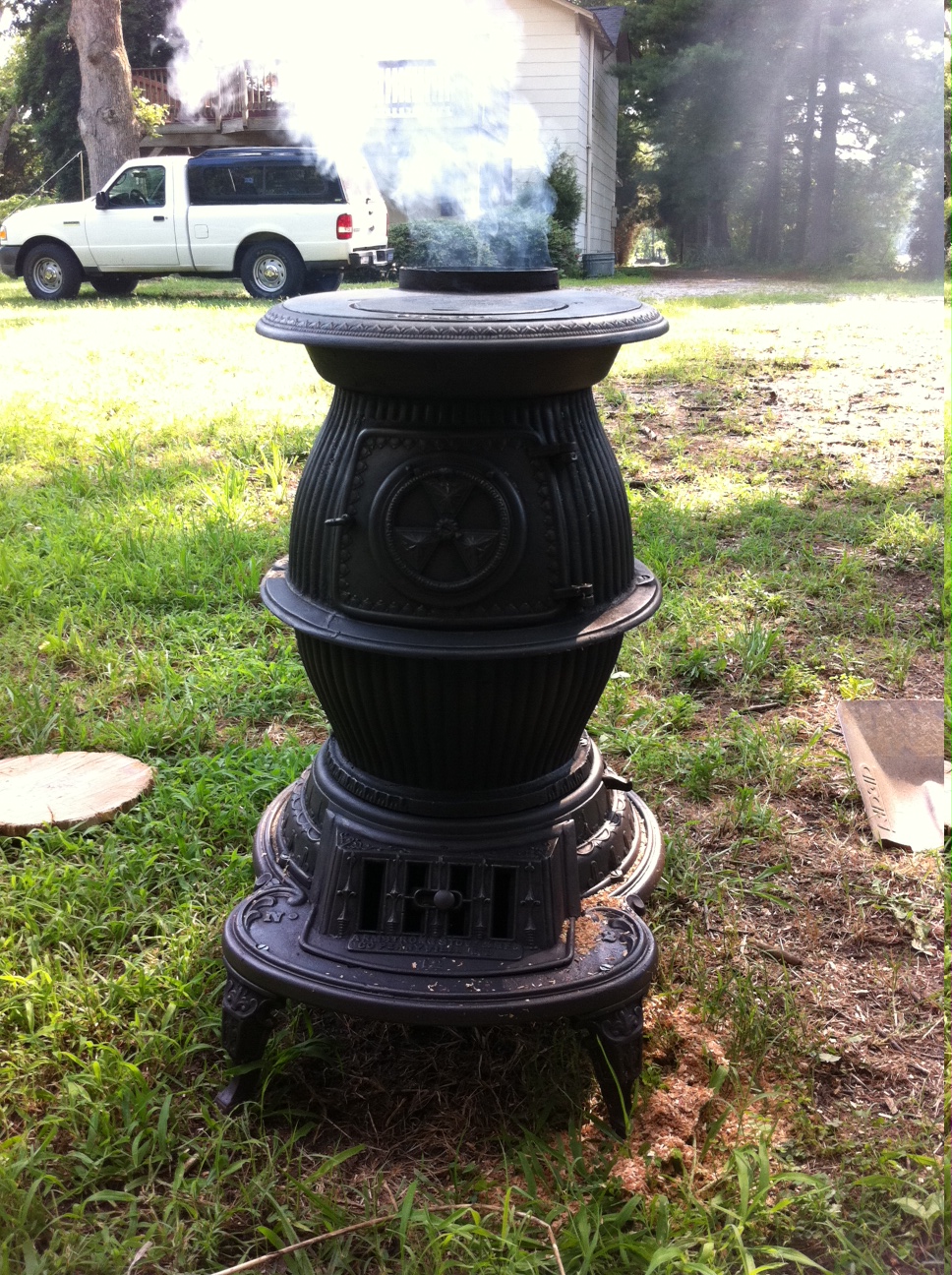
It is a Pearl stove No. 12 made by the Armstrong Stove & MFG Co. Perryville MD. But that is all I know about it. I can't find any other information about this stove, but I have seen other members on this board posting photos of their potbelly stove burning Anthracite, so I thought to myself, why can't this one?
Let me just say that I have no other form of heating in my house other than a few baseboards left on the first floor that I really don't want to use and will soon be taken out as well, so I would like the most efficient type and size of coal that will burn in this stove. I will be using this coal/wood stove to heat the house, as it would have been in the 19th century. The original chimney was made for a coal fireplace/insert but a previous owner tried to make it into a wood fireplace and ruined it, which is why I had it restored and lined. I have a small victorian parlor wood stove for the upstairs and a few other flues to add some more stoves on it I want to.
Victorian Parlor stove
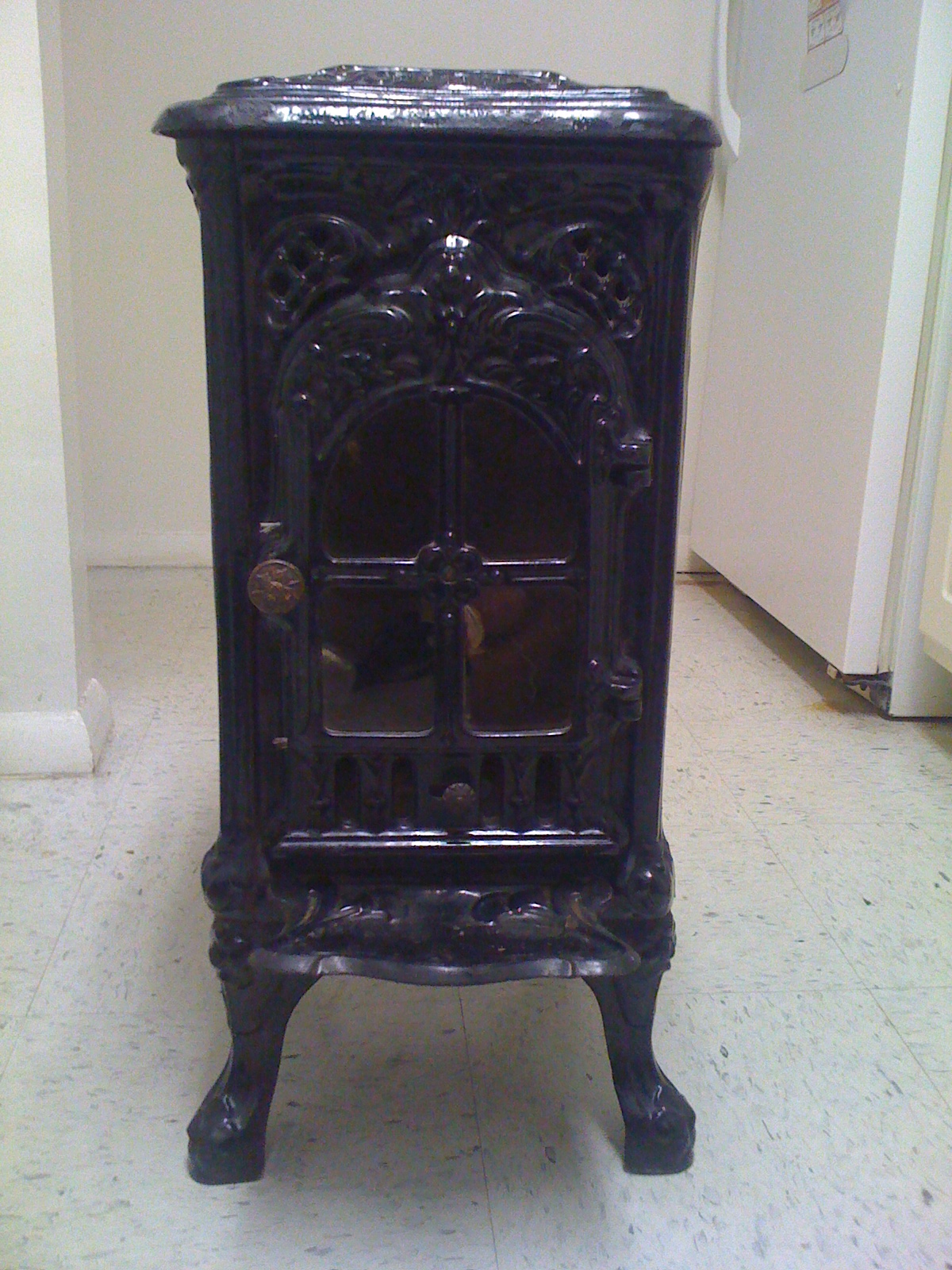
Warm Morning stove 414A ( I believe this one was designed for burning Bituminous coal)
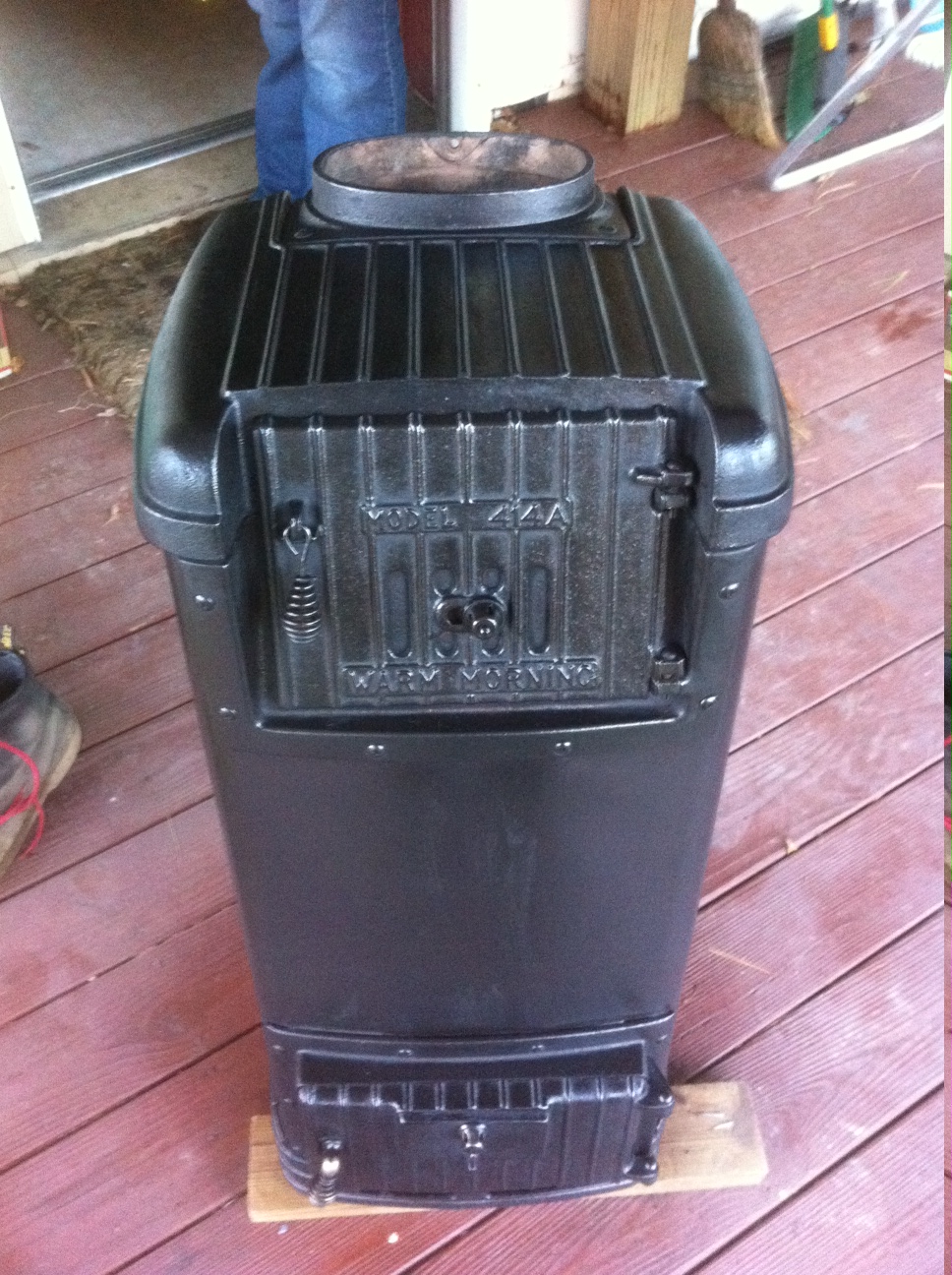
After you all help me establish which type of coal I should use for this potbelly, I will need to know what is the best size?
of course they have stove coal but maybe it is a little large for this potbelly? it is a rather decent size fire pot though. Would the nut size be a the best route to go? or is the stove size a good way to go?
So before I make the trip up to PA to buy as much coal as I can please help me figure this all out!
Thanks!
Josh
Re: New to the Coal World and Need a Little Direction
Posted: Mon. Nov. 21, 2011 9:41 pm
by wsherrick
Hi and welcome to the Forum. First let's get terminology correct. The correct term for your Pearl No 12 is that it is a Cannon Heater. Potbelly is a slang term for Cannon Heaters. You should have no trouble burning Anthracite it it. Cannon Heaters however were not meant to be household heaters, but made for shops and work places where the fire was meant to only last during the working day and then go out. It will work as it was meant to work, it will require more attention more often than other types of stoves. The size coal that it should have depends on the size of the fire pot. My guess is that Nut coal would be the best size for it. Bituminous would work fine in it as well. There is nothing wrong with burning Soft Coal. It depends on the quality of it. The thing is Bituminous coals have a huge range of different burning characteristics and you might take a while to find the best type for your needs. Anthracite does vary a little, but; overall it all burns the same.
You are correct that the Warm Morning Stove is designed for Bituminous. It is, but Anthracite can be burned in it as well.
If you want the proper Anthracite Stove to heat your Nineteeth Century house. Do it the way they did it. Get a Base Heater. A Base Heater will heat the whole house for a lot less expense in coal than a direct draft stove. Plus, it is historically perfect for your house.
Again welcome, and don't be afraid to ask lots of questions. We are here to help you.
Re: New to the Coal World and Need a Little Direction
Posted: Mon. Nov. 21, 2011 10:45 pm
by franco b
On the Warm Morning there is supposed to be a base about 3 or 4 inches high that holds it up off the floor. It will work well with anthracite. There should be an ash pan and a tending tool that fits into the shaker portion of the grate so it can be shaken through the air intake flap rather than with the door open which would be dusty.
That is a nice looking period cannon stove. As William said they were for firing quick and hot so did not pay much attention to air tightness at the ash door. The extensive fluting on the stove acts to increase the actual surface area of heat exchange. Some have improved the situation by applying a bead of high temperature silicon around the mating surfaces of the door to make it capable of longer burn times. It will also need an ash pan to keep the dust down.
The little wood stove looks French to me.
Re: New to the Coal World and Need a Little Direction
Posted: Tue. Nov. 22, 2011 12:20 am
by Smokeyja
wsherrick wrote:Hi and welcome to the Forum. First let's get terminology correct. The correct term for your Pearl No 12 is that it is a Cannon Heater. Potbelly is a slang term for Cannon Heaters. You should have no trouble burning Anthracite it it. Cannon Heaters however were not meant to be household heaters, but made for shops and work places where the fire was meant to only last during the working day and then go out. It will work as it was meant to work, it will require more attention more often than other types of stoves. The size coal that it should have depends on the size of the fire pot. My guess is that Nut coal would be the best size for it. Bituminous would work fine in it as well. There is nothing wrong with burning Soft Coal. It depends on the quality of it. The thing is Bituminous coals have a huge range of different burning characteristics and you might take a while to find the best type for your needs. Anthracite does vary a little, but; overall it all burns the same.
You are correct that the Warm Morning Stove is designed for Bituminous. It is, but Anthracite can be burned in it as well.
If you want the proper Anthracite Stove to heat your Nineteeth Century house. Do it the way they did it. Get a Base Heater. A Base Heater will heat the whole house for a lot less expense in coal than a direct draft stove. Plus, it is historically perfect for your house.
Again welcome, and don't be afraid to ask lots of questions. We are here to help you.
See,I'm already learning something on here. The fire pot is 10" Diameter at the bottom where the shaker is and 14.250" in the middle and back to 10" diameter just below the top. The shaker looks like the nut size will be the smallest I can put in there. Pea size looks way to small and would probably just fall through. Can you link me to some photos and explain the base heater for me? I just did a quick search on google but no luck and I am about to head to work for the day. This house was an old Farm house and it has 4 chimneys; one being for the kitchen wood stove/oven, two upstairs and one main one downstairs. I wish I knew a better history on the house but some things have changed during the 19th century that left me wondering exactly what they would have used. As far as Anthracite vs. Bituminous goes, my main concern is the corrosiveness of the fly ash. Will the bituminous ash be more corrosive than the anthracite due to its higher sulfur content? Also considering I can't get coal near Richmond VA, where in PA or near, would you suggest buying Bituminous coal if I wanted to buy better quality Bit coal?
franco b wrote:On the Warm Morning there is supposed to be a base about 3 or 4 inches high that holds it up off the floor. It will work well with anthracite. There should be an ash pan and a tending tool that fits into the shaker portion of the grate so it can be shaken through the air intake flap rather than with the door open which would be dusty.
That is a nice looking period cannon stove. As William said they were for firing quick and hot so did not pay much attention to air tightness at the ash door. The extensive fluting on the stove acts to increase the actual surface area of heat exchange. Some have improved the situation by applying a bead of high temperature silicon around the mating surfaces of the door to make it capable of longer burn times. It will also need an ash pan to keep the dust down.
The little wood stove looks French to me.
The Warm morning has the base to it, you just can't see it in the photo. I also have the ash pan and the tending tool. I actually have two tending tools and two shaker forks for it as well. I cemented black cording to the inside of the door to the Cannon-heater to create an air-tight fit and I believe I might try to put some cording on the bottom cover but It doesn't seem to be a problem now.
I do need to make an ash pan for the cannon heater though.
You know the little parlor stove may be French. I could never find any info on it but it was sold to me as a Victorian parlor stove and it still has the original mica in the door.
Thanks for all the great information so far! I am really excited about burning coal this winter and I am very excited about getting the right stoves for my house if need be. I just paid a pretty penny for the chimney restoration so I want to get some good use out of it.
Re: New to the Coal World and Need a Little Direction
Posted: Tue. Nov. 22, 2011 12:37 am
by Berlin
Hi, Welcome to the coal forums

It is unfortunate that the stack was lined with stainless, without some substantial luck it won't hold up well with any coal and can reduce the safety of the flue due to potential collapse etc. Whether you burn anthracite or bit will have little effect on the life of the stainless as the sulfur content of even "high" sulfur bit doesn't vary more than 1-3% from that of anthracite (anthracite around 1% and bit from .5 - 4%) and many southern WV and eastern KY coals have sulfur contents less than or comparable to anthracite.
If you are interested in burning bit coal the rules that apply for anthracite don't necessarily apply - you want LARGE sizes, lump is ideal. You will want an 8" connecting pipe and an 8" flue ideally, but a 6" may work if you burn the fire hot from time to time - to loosen any powdery soot deposits.
You will want to find a lump bituminous coal that has a low coke button or FSI free swelling index.
Eastern KY coals with more than 13,000btu/lb are best.
You do not want a coal with a high swelling index, it will stick together while burning - Maryland and many easternmost virgina coals have this property.
Benefits of Good bit coal: more heat (as much as 14,500btu/lb vs anthracite 12,500) and less ash (often eastern KY coals are 4-7% ash vs. anthracite 10%+) often much lower cost.
Downside of bit coal hand fired: some visable smoke from the flue and some soot inside the flue (although it is non-flammable powdery soot - no creosote like wood)
Re: New to the Coal World and Need a Little Direction
Posted: Tue. Nov. 22, 2011 12:57 am
by Smokeyja
Berlin wrote:Hi, Welcome to the coal forums

It is unfortunate that the stack was lined with stainless, without some substantial luck it won't hold up well with any coal and can reduce the safety of the flue due to potential collapse etc. Whether you burn anthracite or bit will have little effect on the life of the stainless as the sulfur content of even "high" sulfur bit doesn't vary more than 1-3% from that of anthracite (anthracite around 1% and bit from .5 - 4%) and many southern WV and eastern KY coals have sulfur contents less than or comparable to anthracite.
If you are interested in burning bit coal the rules that apply for anthracite don't necessarily apply - you want LARGE sizes, lump is ideal. You will want an 8" connecting pipe and an 8" flue ideally, but a 6" may work if you burn the fire hot from time to time - to loosen any powdery soot deposits.
You will want to find a lump bituminous coal that has a low coke button or FSI free swelling index.
Eastern KY coals with more than 13,000btu/lb are best.
You do not want a coal with a high swelling index, it will stick together while burning - Maryland and many easternmost virgina coals have this property.
Benefits of Good bit coal: more heat (as much as 14,500btu/lb vs anthracite 12,500) and less ash (often eastern KY coals are 4-7% ash vs. anthracite 10%+) often much lower cost.
Downside of bit coal hand fired: some visable smoke from the flue and some soot inside the flue (although it is non-flammable powdery soot - no creosote like wood)
You know I wondered about the SS liner holding up to the coal and I figured as long as I cleaned it as soon as I shut down the stove for spring I would be good and throw some baking powder to neutralize the acid. The chimney wasn't lined before. It looked as though they burned coal and wood by the build of soot on the inside of the bricks and lime mortar. My other two chimneys are terra cotta lined. What do you suggest as a liner? The chimney company is comming today to actually install the liner and peralite maybe I can stop them if the SS liner will be an issue. The problem is once you go south of MD, no one knows anything about Heating with coal in a house. I am paying good money for this chimney restore so I am goin to make damn sure I can burn coal... I don't wish to split wood this winter

. The company is giving me a 10 year warranty btw.
Re: New to the Coal World and Need a Little Direction
Posted: Tue. Nov. 22, 2011 12:58 am
by wsherrick
Click on the link below to read about my Glenwood Base Heater. In the little search box in the right hand corner, type Glenwood and see what comes up.
Glenwood Baseheater-Specs, Photos and Performance
Re: New to the Coal World and Need a Little Direction
Posted: Tue. Nov. 22, 2011 1:09 am
by Berlin
An unlined chimney in decent shape is perfectly safe with either anthracite or bituminous coal. Very few people re-line existing flues with tile today, there's just not as much profit in it and it's harder work. A tile lined chimney is excellent with coal, but it's not necessary. Liners of any variety first became popular and mandated because wood creosote tends to leach thorugh mortar joints and when a chimney fire occurs from wood-burning creosote, the leached tars and creosote can ignite on the exterior of the chimney. A liner (and it's airspace) also slows heat moving through a stack due to a chimney fire. None of this is ANY concern with coal. There is NO chimney fire danger with coal. I would not throw away money on the liner which very well could decrease safety; I would take a look at the chimney and if it seems solid, have it swept and attach your stove to it as-is. This company may "warranty" the liner for 10 years but what are the conditions? replacing a stainless liner after it's been backfilled with vermiculite is a huge PITA, is this company going to do this every few years for free without a fight? Stainless liners shouldn't be used with coal, I've seen 304 and 316 pinholed on even oil burning appliances, coal destroys them far faster.
SS Liner Woes
Re: New to the Coal World and Need a Little Direction
Posted: Tue. Nov. 22, 2011 1:24 am
by Smokeyja
Berlin wrote:An unlined chimney in decent shape is perfectly safe with either anthracite or bituminous coal. Very few people re-line existing flues with tile today, there's just not as much profit in it and it's harder work. A tile lined chimney is excellent with coal, but it's not necessary. Liners of any variety first became popular and mandated because wood creosote tends to leach thorugh mortar joints and when a chimney fire occurs from wood-burning creosote, the leached tars and creosote can ignite on the exterior of the chimney. A liner (and it's airspace) also slows heat moving through a stack due to a chimney fire. None of this is ANY concern with coal. There is NO chimney fire danger with coal. I would not throw away money on the liner which very well could decrease safety; I would take a look at the chimney and if it seems solid, have it swept and attach your stove to it as-is. This company may "warranty" the liner for 10 years but what are the conditions? replacing a stainless liner after it's been backfilled with vermiculite is a huge PITA, is this company going to do this every few years for free without a fight? Stainless liners shouldn't be used with coal, I've seen 304 and 316 pinholed on even oil burning appliances, coal destroys them far faster.
SS Liner Woes
Crap! I feel like an idiot not researching this better and letting the company talk me into the SS liner... I guess I trusted their knowledge. The chimney was not in the best shape. It is made of lime mortar and hand made bricks and the lime was powdering. My other chimneys are the terra cotta lined ones... Should I try a large tarra cotta sectioned liner? No one burns coal here so I guess they just don't know. I believe what they are using is perlite lime based insulation.
Re: New to the Coal World and Need a Little Direction
Posted: Tue. Nov. 22, 2011 4:12 am
by Freddy
I agree with the chimney liner thoughts.... The stainless liner just isn't going to last as long as you think. I'd also guess that corrosion won't be covered by the warranty. Even if you got lucky & it lasted 11 years...then what? A mason chimney lasts about forever with coal and it's amazing how crappy a chimney can be & still be safe when burning coal.
Re: New to the Coal World and Need a Little Direction
Posted: Tue. Nov. 22, 2011 4:48 am
by Smokeyja
Freddy wrote:I agree with the chimney liner thoughts.... The stainless liner just isn't going to last as long as you think. I'd also guess that corrosion won't be covered by the warranty. Even if you got lucky & it lasted 11 years...then what? A mason chimney lasts about forever with coal and it's amazing how crappy a chimney can be & still be safe when burning coal.
I guess what my main issue is. None of the chimney places around here deal with coal but I was assuming the coal would be fine in the SS liner until my Father made the point about sulfuric acid because they deal with it on a large scale at the coal power plant. The other problem is making a chimney safe for wood and coal. I have an over abundance of hardwood to burn and would like to use it as a fall back considering coal is not very accessible near Richmond VA. So how do you make a chimney safe for both and I wonder if these chimney restorers will even do anything other than a ss liner. My other thought is this... When the SS liner starts to pin hole or fail wouldn't the lime insulation act as a masonry flue? Lime doesn't burn and won't explode like Portland-like mortar . So I may be fine if that does happen but I will call the company ASAP this morning and discover it further.
Re: New to the Coal World and Need a Little Direction
Posted: Tue. Nov. 22, 2011 5:06 am
by Berlin
An old chimney with soft mortar is not a problem for coal. What I would do is hook one of your stoves (the one you plan on burning only coal in) to the unlined chimney as-is. hook the stove you anticipate to be burning wood in from time to time to one of your tile-lined flues. The only liner good for coal and wood is tile - but tile is still prone to cracking during extreme chimney fires -always burn seasoned wood and burn it hot - keep the creosote from building up. The backfilling with expanded pearlite and lime will be a nightmare when not if the stainless fails, and you hope that as it fails it keeps the failed portions intact- this may not be the case, deteriorated pieces may fall and jam in the flue becoming almost impossible to dislodge. Most "chimney professionals" and even the liner mfg'rs have no idea about coal. It will be a mess and a waste of your hard-earned money, don't do it.
Re: New to the Coal World and Need a Little Direction
Posted: Tue. Nov. 22, 2011 7:21 am
by SteveZee
First off, you are not the first person to have this liner problem. There are several threads lately where people were told that a SS liner was the top of the line and even that it "ok" for coal. An unlined masonry is truely better(for coal) as you've now found out. While for wood burning it is probably an excellent chimney, you FIL is quite right that you'll need to keep an eye on it and scrub down at the end of each season.
Also you must remember that most of the coal suggestions (sizes) people are giving you assume that you'll use anthracite. With bit coal, that doesn't apply and you would be looking for Kentucky lump coal. For anthracite, you'll want nut or stove coal. Whatever you decide, best of luck to you and I hope it works out that you can see the advantages of coal. It's 16 degrees outside, here on the coast of Maine this morning, and the house is a lovely 71 degrees! Still amazes me and I know what to expect!

Re: New to the Coal World and Need a Little Direction
Posted: Tue. Nov. 22, 2011 11:15 am
by Smokeyja
I am so glad I found this site. You guys have been a big help! This is the most information I have gotten about coal. The Rain canceled out the liner coming being installed today and I told them I need to discuss a better option before they continue. If I need to choose between coal and wood I am going to choose coal. I am sold as far as the benefits and the safer application of coal. Plus I really am tired of cutting wood. I have 7 trees down, from the hurricane this past year, all hardwoods, and I am burned out on cutting wood. I don't want to split it and I have to wait about a year anyways until the wood is seasoned. Virginia mines Bit coal yet I can't buy it here WTF? I really want to burn Anthracite though, so PA here I come.
one of you mentioned Tile lined chimneys, but what about terracotta ? If coal is as safe as it sounds then I can start burning right now in two of my chimneys. Here are some photos if anyone was interested in what my chimneys look like.
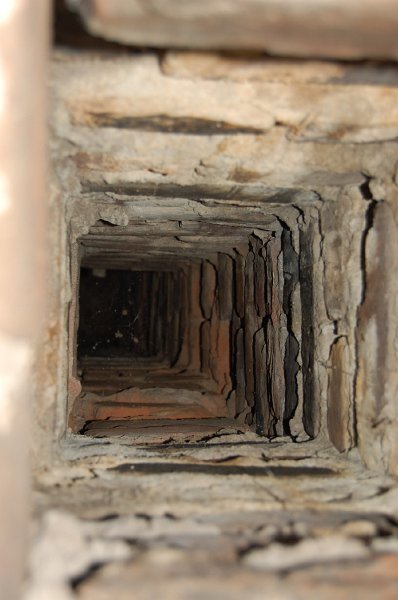
Both the chimneys look like this inside. it is two chimneys built in one main structure.
This was a photo before I took the crap liner that a previous had shoved in the fireplace.
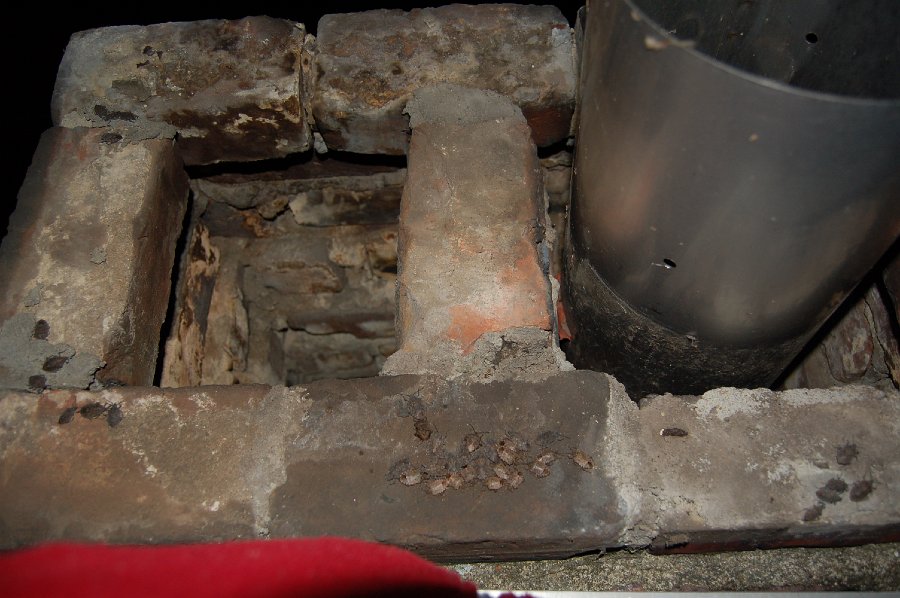

what does this look like to you guys? Was a lot of wood burned in this chimney or coal?
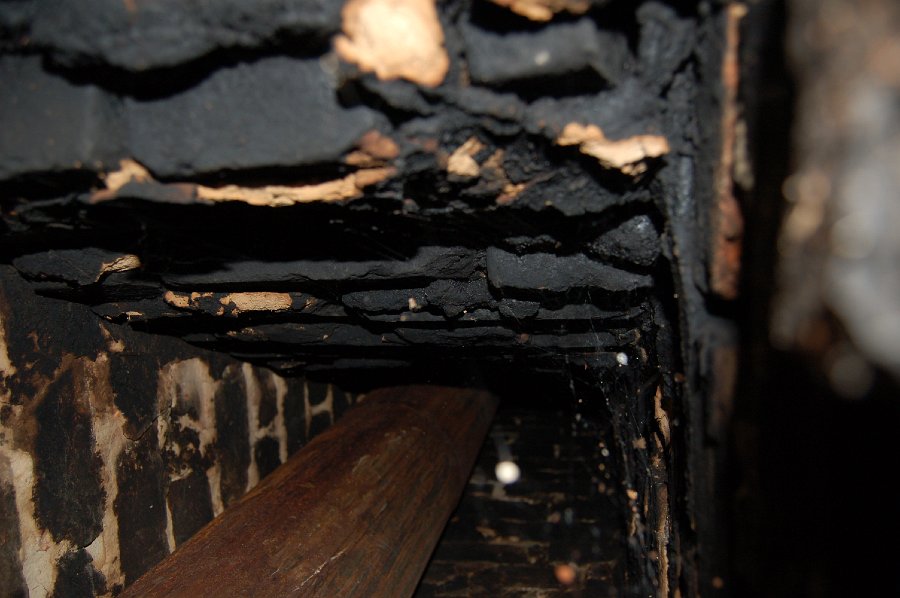
This is the main chimney BTW before I pulled out the crap liner and took down the facing.
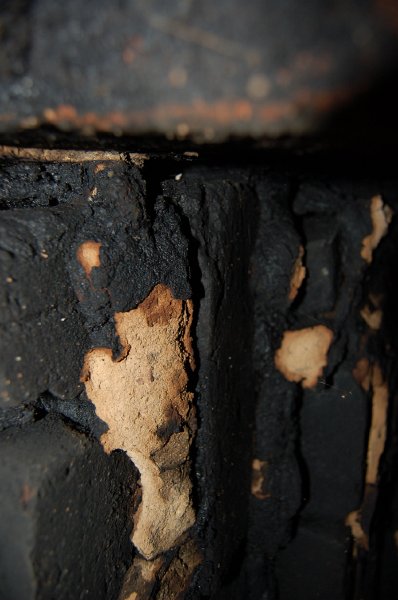
one of the flues in the terracotta lined chimneys.
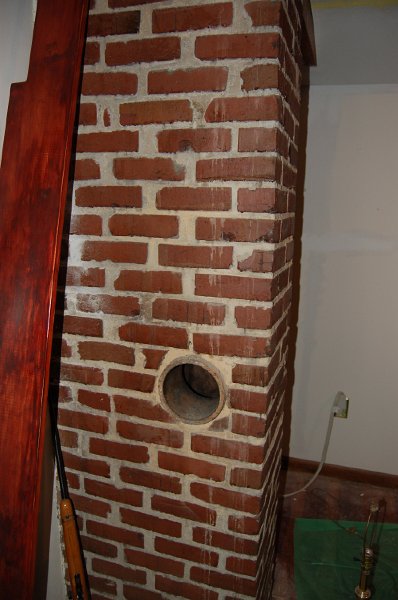
BTW what is the general code in PA for burning coal stoves? The fire inspector said I can't use either of the chimneys that are terracotta lined before the flues are less than 18" from the drywall... The house has been here about 150 years and the chimneys were well used. One flue was used as the kitchen wood stove/oven or coal and actually there is quite a lot of black soot I have pulled out of that one. The other flue is upstairs directly above it encased in the same brick structure but a different flue in the bedroom.
Re: New to the Coal World and Need a Little Direction
Posted: Tue. Nov. 22, 2011 1:47 pm
by Smokeyja




